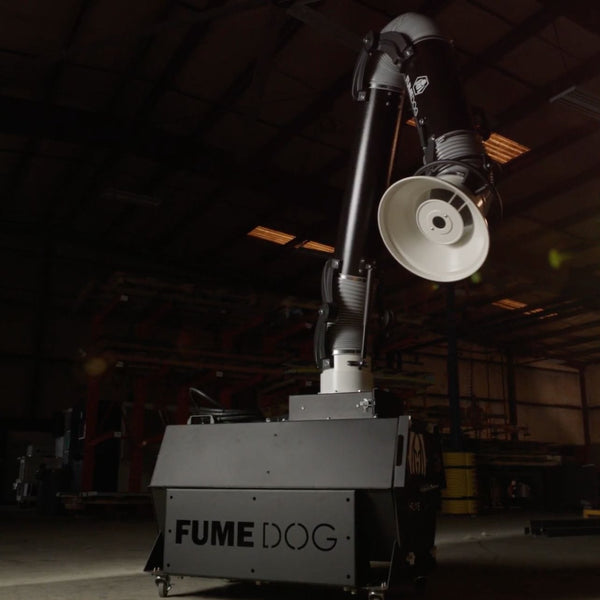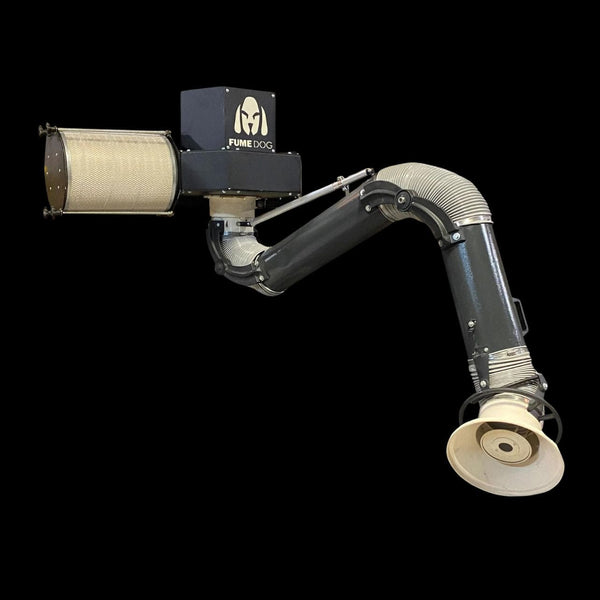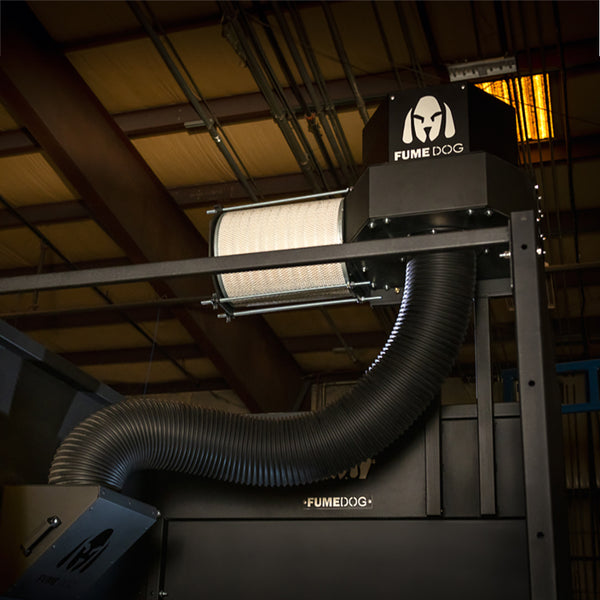
Flux core welding, also known as flux cored arc welding (FCAW), is a semi-automatic welding process that uses a continuously fed tubular electrode filled with flux compounds. This versatile welding method combines the speed and efficiency of wire-fed processes with the ability to weld in challenging conditions, making it a popular choice for both industrial and outdoor applications.
TLDR: Key Points About Flux Core Welding
• Versatile Process: FCAW combines the benefits of continuous wire feeding with flux protection, working well both indoors and outdoors
• Two Main Types: Self-shielded flux core needs no external gas, while gas-shielded versions use both flux and external shielding gas
• Ideal Applications: Excels on thick materials, structural work, and outdoor projects where other processes struggle
• Equipment Requirements: Requires FCAW-capable welding machine, proper wire feeder, and adequate ventilation for fume management
Ready to Tackle Your Next Flux Core Welding Project?
Whether you're working on heavy structural projects or outdoor welding applications, protecting yourself from welding fumes should be your top priority. Flux core welding generates more fumes than many other processes, making proper extraction essential for your health and safety.
Explore our portable welding fume extractors designed specifically for demanding applications like FCAW. Our systems provide the mobility and power you need to maintain clean air wherever your welding takes you.
Understanding Flux Cored Arc Welding (FCAW)
Flux-cored arc welding is an arc welding process that creates strong, reliable welds using an electric arc between the workpiece and a special flux-cored electrode. Unlike solid wire electrodes used in other welding processes, flux core wire contains a hollow center filled with flux materials that provide multiple functions during the welding operation.
How Flux Core Welding Works
The core welding process begins when an electric arc is established between the flux-cored electrode and the base metal. As the welding arc melts the flux core wire, the flux materials within the electrode create protective gases and slag that shield the weld pool from atmospheric contamination. This welding process allows for continuous operation as the wire feeder automatically supplies fresh electrode material.
The welding gun delivers the flux core wire while maintaining the proper welding arc length. As the weld metal cools, it forms a strong weld joint that bonds the materials together. The flux compounds help produce consistent mechanical properties throughout the welded area.
The Role of Flux Cored Electrode
The flux-cored electrode serves as both the filler metal and the source of protective materials. The tubular design allows manufacturers to include specific flux compounds that improve arc stability, enhance weld metal properties, and provide the necessary shielding method for quality results.
Types of Flux Core Welding Methods
There are two primary variations of this welding method, each designed for specific applications and working conditions.
Self-Shielded Flux Core Welding
Self-shielded flux core welding relies entirely on the flux within the electrode to produce shielding gases and protect the weld area. This approach eliminates the need for external shielding gas, making it ideal for outdoor welding where wind might blow away protective gases. The self-shielded wire contains all necessary compounds to create high-quality welds without additional gas shielding.
Gas Shielded Flux Core Welding
Gas shielded flux core welding, also called dual shield welding, combines the flux within the electrode with external shielding gas, typically carbon dioxide or a gas mixture. This method provides superior weld quality and allows for higher welding speed compared to self-shielded options. The gas shielded wires work particularly well on thicker materials and ferrous metals.
Flux Core vs Other Welding Processes

Understanding how flux welding compares to other welding techniques helps determine when FCAW is the best choice for your projects.
Flux Core Welding vs MIG Welding
While both processes use continuously fed wire electrode systems and similar welding equipment, there's a primary difference in their approach. Learn more about what MIG welding is to understand how gas metal arc welding relies on solid wire and external shielding gas for all applications. Flux core offers better penetration on thicker metals and works well without gas in outdoor conditions, while MIG welding typically produces cleaner welds on thinner materials.
Flux Core Welding vs Stick Welding
Compared to shielded metal arc welding (stick welding), flux core provides faster travel speeds and doesn't require frequent electrode changes. Stick welding uses individual electrodes that must be replaced regularly, while FCAW uses continuous wire-fed electrode systems. However, discover essential welding procedures that apply to both processes for optimal results.
Flux Core Welding vs TIG Welding
TIG welding offers superior precision and weld appearance, but operates much more slowly than FCAW. Discover what TIG welding involves to see how this metal arc welding process uses a tungsten electrode and separate filler material. Flux core excels in production environments where speed matters more than cosmetic appearance.
Equipment Needed for Flux Core Welding
Success with this welding process requires the right welding machine and accessories designed for FCAW operations.
Essential Welding Equipment and Machine Requirements
A flux core welder must provide adequate power output and proper wire feeding capabilities. Most welding machines suitable for FCAW can handle both gas-shielded and self-shielded applications. The welding torch must accommodate the larger flux core wire diameters and handle the increased heat generated during high welding speed operations.
Proper ventilation becomes critical when flux welding, as the process generates significant fumes and particles. Understanding the worst kinds of welding fumes helps welders recognize the importance of adequate fume extraction during FCAW operations.
Flux Core Wire and Electrode Selection
Choosing the right filler wire depends on the base metal composition, welding positions required, and whether you're using gas shielding. Different flux formulations work better for specific materials - some excel with cast iron while others optimize performance on standard carbon steel.
The welding wire diameter affects penetration depth and travel speed. Larger diameters work well for thicker materials, while smaller wires provide better control in challenging welding positions.
When to Use Flux Core Welding

FCAW shines in specific applications where other welding processes struggle to deliver optimal results.
Best Applications for FCAW
This welding method excels in production environments requiring high deposition rates and strong welds. Construction, shipbuilding, and heavy equipment repair frequently rely on FCAW for its combination of speed and strength. The process works exceptionally well on ferrous metals and provides excellent penetration on thick sections.
Repair work benefits from flux core's ability to weld through light contamination and scale. Learning how to prevent metal fume fever becomes particularly important during extended FCAW sessions due to the higher fume generation rates.
Outdoor Welding Advantages
Wind and weather conditions that make gas welding impractical don't affect self-shielded flux core welding. The shielded flux approach allows welders to work in field conditions where maintaining consistent gas coverage would be impossible. This makes FCAW invaluable for pipeline work, structural steel erection, and other outdoor construction projects.
The robust arc characteristics help maintain consistent weld quality even when working in less-than-ideal conditions, though proper safety equipment and fume extraction remain essential regardless of location.
Frequently Asked Questions
What is the main difference between flux core and solid wire welding?
The primary difference lies in the electrode construction - flux core uses a tubular electrode filled with flux compounds, while solid wire electrode welding relies entirely on external shielding gas for protection.
Can I use welding aluminum with flux core welding?
Most flux core applications focus on ferrous metals rather than welding aluminum. Gas welding or other specialized welding processes typically work better for aluminum applications.
What filler material options are available for FCAW?
Flux core offers various filler wire compositions designed for different base metal types, from standard carbon steel to specialized alloys, each containing specific flux formulations.
How does the continuous wire-fed electrode system work?
A wire feeder mechanism automatically feeds the continuously fed wire electrode through the welding torch at a controlled rate, maintaining consistent arc length and deposition.
What role does carbon dioxide play in gas-shielded flux core?
Carbon dioxide serves as the external shielding gas in dual-shield applications, working with the flux to provide complete weld area protection and improved molten metal characteristics.
Is a special welding torch required for FCAW?
While similar to standard welding torches, FCAW torches must handle larger wire diameters and higher heat levels, and some include connections for gas shielded applications.
What creates the shielding method in self-shielded wire?
The flux compounds within self-shielded wire decompose during welding to produce shielding gases directly at the weld area, eliminating the need for external gas shielding.
Can flux core welding achieve high-quality welds consistently?
Yes, when properly executed with appropriate welding techniques and equipment settings, FCAW produces high-quality welds with consistent mechanical properties.
What makes flux core suitable for working with thicker materials?
The deep penetration characteristics and high deposition rates make flux core ideal for thicker metals, often requiring fewer passes than other welding processes.
How do gas shielded wires differ from self-shielded options?
Gas shielded wires work in conjunction with external shielding gas for superior weld quality, while self-shielded versions contain all necessary protection within the flux core.
What welding positions work best with FCAW?
Most flux core electrodes work well in flat and horizontal welding positions, with specialized formulations available for vertical and overhead applications.
How does FCAW compare to other welding processes in terms of speed?
Flux core typically offers higher welding speed than stick welding and comparable rates to MIG welding, making it efficient for production work.





